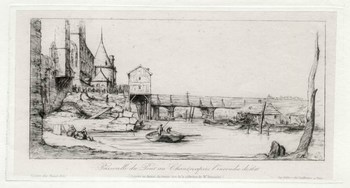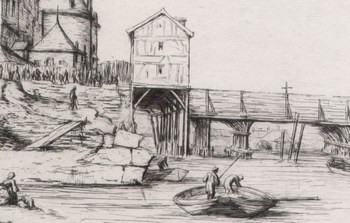|
PASSERELLE DU PONT AU CHANGE APRES L'INCENDIE DE 1621, Reference: Delteil/Wright 50. Etching. Signed
O.M. on the right and "star" on the left 12 by
23 cm on plate border. Price:
400 Euro |
You can access larger images by clicking on the thumbnails.
Contact me for prices and availability before purchase.
Below you can access detail
images to see the quality of these works.

